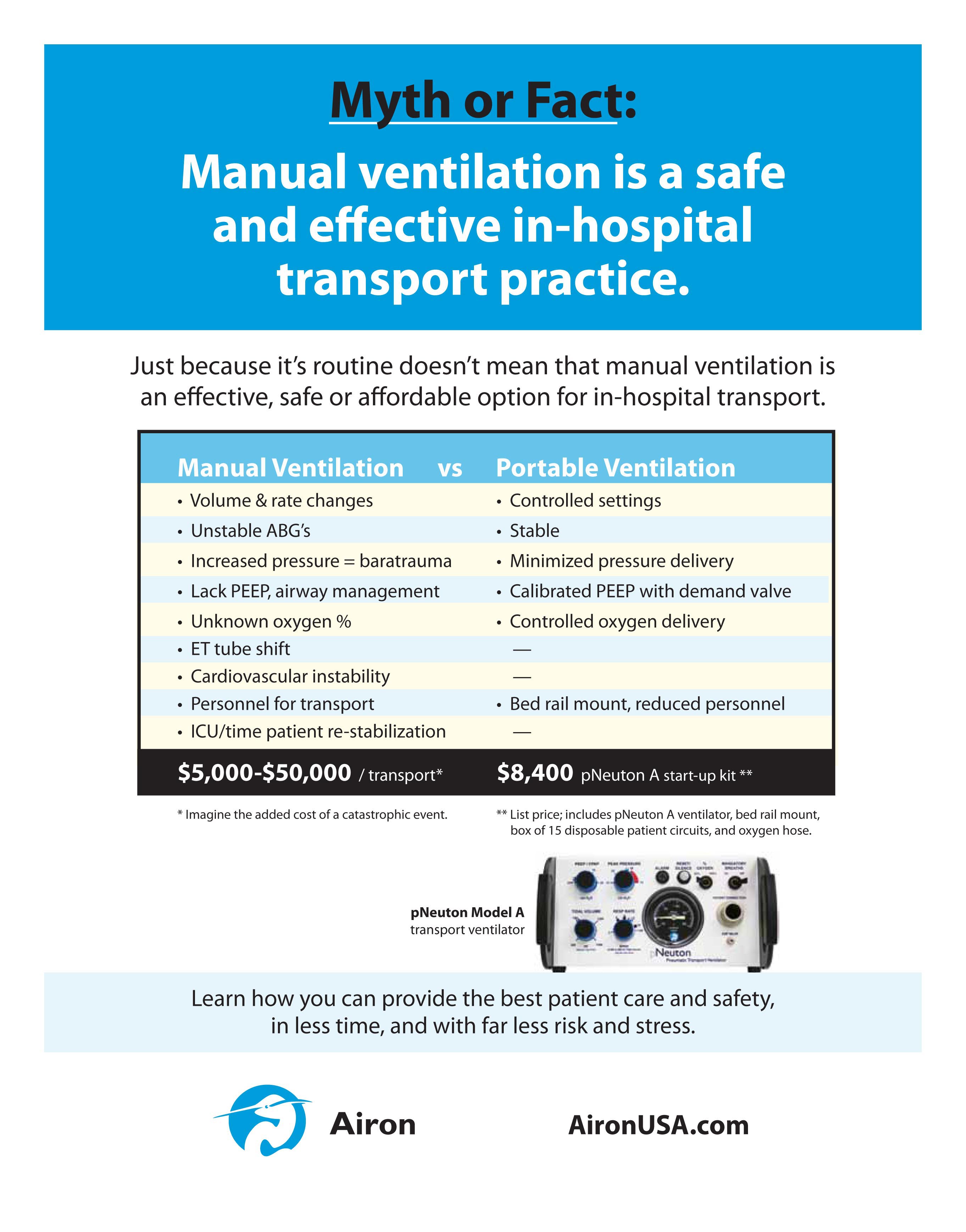Moving a patient between in-hospital locations is complicated and fraught with risk. Why add ventilation and hemodynamics to the long list of potential complications? Patient stability and safety requires ventilatory controls during transport.
Studies underscore problems
Studies show that manually ventilated patients have greater deviations from normocarbia (35-45 mmHg) than mechanically ventilated patients. Blood pressure and heart rates during transport can significantly increase or decrease as well.
“Transport related adverse events are common, with reported incidences as high as 68%.”
Respiratory Care Journal
You can increase patient safety
The use of a portable ventilator can effectively maintain blood gases at desired values, produce a stable ventilatory pattern, and shorten transport time with less alteration in hemodynamic parameters during the in-hospital transport of critical care patients.
The use of mechanical ventilation for in-hospital transport of critical patients is a safer method compared with manual ventilation.
“The notion that experienced practitioners can safely provide manual ventilation during transport is simply based more on myth than fact.”
Respiratory Care Journal


